Sourcing product from China just got even riskier. These risks have never been higher and they just keep increasing.
1. U.S. Tariffs Make Manufacturing in China Risky
Tariffs can come and go but are always a risk for any company that buys product from China for sale in the United States. They are a risk because the $10 widget you buy from China today may cost you $12.50 if you end up having to pay a 25% tariff on it. Yes, there are all sorts of things that can be done (and my firm’s international trade lawyers seem to be spending half their waking hours doing these things for our clients), but in the end your product prices from China will almost invariably go up due to tariffs.
2. U.S. Duties Make Manufacturing in China Risky
“Then there are the duties, which for many of our clients are (and should be) the scariest thing of all.” Anti-dumping and countervailing duties imposed on Chinese products by the United States and the European Union are always a huge risk when buying from China. The following make up most of what you should know about these duties:
a. These duties mostly apply to products subsidized by a foreign country. China pretty much subsidizes all its products in one way or another (tax relief, free/subsidized export insurance from Sinosure, free/subsidized IP registrations, subsidized utility costs, etc.). China is the highest risk country, by far, in terms of likelihood of getting hit by duties, and the list of Chinese products subject to duties is roughly five times more than any other country.
b. These duties can be massive and they typically range from 50% to 200% or higher. That’s right, 50% to 200%.
c. These duties can be imposed retroactively. This means you can be hit with a 200% duty on widgets you bought from China last year. Not kidding. This is what has kept our international trade lawyers so incredibly busy these last few years.
d. Having your China products go to some other country before you bring them into the United States or the EU does not change anything, other than put you at risk for illegal transshipment fines and criminal penalties. See US-China Tariff Updates: What You Can do NOW. The U.S. and the EU are aggressively seeking out companies that claim their products from China to be from somewhere other than China and they are catching and prosecuting and fining companies left and right. Based in part on how China has been aiding Russia in slaughtering Ukrainians, there is zero love for China from the leading import nations right now and government prosecutors and agencies are being told (or they just know) that going after Chinese products is a good thing and leads to promotions and reelection.
3. Tariff and Duty Risks on Products from China Keep Rising
In Importing From China (Directly OR Indirectly) has Big RETROACTIVE Risks, one of our international trade lawyers (who was at the time working on a massive case involving illegal transshipment that eventually led to a U.S. company having to pay the U.S. government $62.5 million, from which our clients got a good chunk), warned about the duty risks on China products:
If you are importing product originally from China covered by or even maybe covered by an antidumping or countervailing duty order, you must be very careful, no matter the country from which you are directly importing the product. Two recent U.S. Commerce Department decisions to expand antidumping (“AD”) and countervailing duty (“CVD”) orders on hardwood plywood to cover ready-to-assemble cabinets highlight this problem.
Earlier this month, the U.S. Commerce Department issued a final scope ruling on Ready To Assemble (“RTA”) Cabinets in the Hardwood Plywood AD and CVD case, finding no exclusion for RTA cabinets. Commerce held that this exclusion from AD and CVD duties applies only to cabinets sold to an ultimate end user (the consumer) and not to RTA cabinets sold to contractors that then install them. With this ruling Commerce effectively expanded the AD and CVD orders to cover RTA cabinets sold to the construction industry, which many (most? importers previously believed were excluded by language in the AD and CVD orders.
This decision exposes U.S. importers of RTA cabinets to millions of dollars in retroactive liability for AD and CVD duties. U.S. cabinet importers that stuck their head in the sand while this AD/CVD exclusion case was pending will likely soon be hit with an enormous bill from the U.S. government.
Years ago, my firm’s international trade lawyers handled a review investigation involving high tech products from China covered by an AD and CVD Order for a Chinese exporter/producer company. Much to the Chinese company’s surprise, the Commerce Department had determined that this small Chinese company was a mandatory respondent and that meant it would need to respond to the entire Commerce questionnaire and be subject to verification.
The Chinese company explained that it had never exported these high tech products to the United States, but it admitted to having sold its products to a Canadian customer. It had no knowledge of what this Canadian customer did with its products and it did not know whether the Canadian company exported the products to the U.S. from Canada.
Under United States AD and CVD law, sales made by a Chinese company and imported into the United States are generally considered to be U.S. sales by the Chinese company if the Chinese company knew when it made the sales that its products were destined for the U.S. In other cases, Chinese companies have been found to be respondents in AD and CVD cases if their packaging revealed that their products were ultimately destined for the U.S.
The problem for the Canadian companies and the U.S. importers in these situations is that the Chinese company that made the Canada sales of products that eventually go to the United States usually will not participate in the AD and CVD review investigation. But the U.S. importer of the products from Canada will find itself owing substantial AD and CVD duties to the U.S. government. I can remember a company that had to shut down its entire U.S. operations because it had exported chemical products from Canada to the United States that were covered by U.S. AD and CVD orders. All of a sudden, the U.S. subsidiary was hit with millions of dollars in retroactive liability because of an AD and CVD case.
U.S. importers that import products from Canada or anywhere else in the world that are originally from China need to be careful right now because their products may be covered by United States AD and CVD orders. These companies could wake up one morning and find themselves liable for millions in dollars in retroactive AD and CVD duties. This is truly the sort of situation where an ounce of prevention is worth a pound of cure. Now is the time to review your supply chain for its China vulnerabilities, whether you import directly from China or not.
Since this post, the number of new anti-dumping and countervailing duty cases against Chinese products has exploded, to the point that one of our international trade lawyers (who profits from just about every such case filed), had this to say about them in Another International Trade (AD/CVD) Petition Against China: This Time it’s Metal File Cabinets:
The last few months have seen an onslaught of trade actions brought by U.S. companies against incoming products of all kinds from China. With all the trade issues involving China and bipartisan anti-China sentiment prevalent in the United States, now is a great time to bring such actions. The international trade lawyers at my firm almost exclusively defend against antidumping and countervailing duty claims instead of bringing them. So I say this not to encourage more such actions, but as a simple statement of fact. If you are importing products from China, now is the time to know the trade risks of your imports.
Again, the international trade lawyers at my firm make our money by representing the Chinese manufacturers and their U.S. importers so the more petitions brought against incoming Chinese products the more money we make. The more petitions, the more our law firm financially benefits and the more I personally financially benefit.
And yet, from an economic and policy standpoint even I am starting to get concerned by all these cases. I say this because of the massive onslaught of AD/CVD cases being brought against China and how aggressive (on multiple levels) the United States Commerce Department has been on these cases. To the point where I am finding myself wondering how important a trade deal with China will be if the United States giveth on the one hand and then taketh via these AD/CVD cases on the other hand. And is it right for the United States government to almost “on the sly” be pushing American (and foreign companies as well) away from China, without making this policy clearer?
Based on all that I hear from my own firm’s international manufacturing lawyers, many American and European companies are decreasing or eliminating their business with China. See The China-US Trade War and the Winner is. . . . MEXICO. It appears U.S. foreign policy is to drive business from China to countries like Mexico, the Ukraine, Vietnam, Thailand, the Philippines, and Indonesia, among others. What this means big picture is that slowly but surely the price of products from China in the United States is rising and will continue to rise. So as one of our China lawyers so often tells our clients: “you need to act accordingly.”
It is truly open season right now on duty cases against Chinese products and so if having to pay a massive duty on your products scares you, you should be looking elsewhere for your product manufacturing, starting right now. And what is true for the United States is pretty much true for the EU as well.
4. China’s Zero-COVID Policy Will Increasingly Mean ZERO Manufacturing
We have a client who has literally not been able to get a single product from either of its two manufacturers for months. This company was doing extremely well, but now if you go to its website, it shows all of its products are sold out. Sadly, its products are not sold out because of super-high consumer demand (though demand is actually still there for them), but because both of its factories shut down due to COVID. This is just an extreme example, but there are factories throughout China that are presently in lockdown and when a factory stays in lockdown for too long, it loses all its employees and goes under or it hangs onto its employees and goes under because it runs out of cash. This is an underrated issue in that most have not yet suffered from it (lately anyway), but for those who have, it often means lights out on their getting delivery of any of their products.
Earlier this year, in Omicron and Supply Chains: Buckle Up, I warned of the huge and inevitable risk of China getting hit hard by Omicron and of how that would lead to massive lockdowns and shutdowns of China factories. I wrote that post in response to an email from a reader asking that I do so and I woke up this morning to an email asking that I update it in light of “the clear indicators that China is on the verge of Hong Kong-scale COVID.” To put this in perspective, Hong Kong now has the highest developed world COVID death rate and for all sorts of reasons, we should expect mainland China to eventually surpass that.
Omicron is incredibly contagious and China is not well-equipped to slow it down to the same extent it has done with previous COVID variants. The carnage we are seeing in Hong Kong is proof of that. The big rise of Omicron in China is already leading to shutdowns of China’s factories and that will only get worse.
Hong Kong’s South China Morning Post (not exactly an anti-China publication!) notes in a headline today that China is “on the brink of biggest biggest Covid-19 crisis since Wuhan as cases surge.” For those whose country has been hit by Omicron (and that is probably just about all of you), the numbers reported by this article are clear indicators of the beginning of what will be a massive COVID spread:
After topping 1,000 for two days in a row, new locally transmitted cases surged to more than 3,100, this time driven by a spike in symptomatic infections, the National Health Commission reported on Sunday.
It came as 16 provinces reported new coronavirus infections, as did the four megacities of Beijing, Tianjin, Shanghai and Chongqing.
Local symptomatic cases more than tripled to 1,807, from 476 a day earlier, the NHC said. Asymptomatic infections edged up to 1,315, from 1,048 the previous day, after dominating the national caseload for the past few days.
China does not classify asymptomatic infections as confirmed cases.
The southern tech hub of Shenzhen, which has been battling an Omicron surge since late February, will carry out three rounds of citywide Covid-19 tests next week.
In a statement on Sunday, city authorities said bus and subway services would be suspended from Monday. Residents were urged to work from home and to step out only to buy daily necessities. And all outbound travellers must submit negative nucleic acid test results taken within the previous 24 hours. Essential services and supplies to neighbouring Hong Kong remain unaffected.
On the east coast, the financial hub of Shanghai and port city of Qingdao in Shandong province are also battling serious outbreaks.
This article needs unpacking, in part because it appears to have been written to avoid Hong Kong’s censorship laws. First off, note the sentence stating that China “does not classify asymptomatic infections.” This is a HUGE deal but the article does not discuss it. It is a huge deal because so many who test positive for Omicron are asymptomatic (maybe as much as 60%) and so we should just assume that the actual number of those with COVID right now in China is greater than double the official number. This is relevant because those who are asymptomatic for COVID are still eminently capable of spreading it.
This article very matter of factly states that Shenzhen (where huge quantities of electronics products are designed, developed, sourced, and manufactured) is essentially on full lockdown. Shenzhen residents being “urged” to work from home essentially means they are being required to work from home and though it is easy for me to type up this blog post on my home desk, it will be impossible for anyone to make electronics in Shenzhen for the immediate future.
The article also matter of factly states that COVID is also prevalent in Shanghai, Qingdao, Beijing, Tianjin, Shanghai and Chongqing. That means at least 100 million people in China’s most important international cities are under (or on the verge of) some form of lockdown.
And the odds are overwhelming that things will continue to get far worse for China over the next few weeks. I say this not because I do not respect the efforts China has made and is making to try to limit COVID, but because I do not see that limiting as possible.
China is in many respects incredibly unprepared for Omicron. First, unlike the Pfizer and Moderna vaccines, China’s vaccines do not prevent the spread of Omicron, though they do appear to work fairly well at moderating the impact of any infection. When I tell this to clients and friends in China, their initial response is that China has never relied much on vaccines to slow COVID’s spread; it has relied mostly on testing, quarantining, and shutdowns/lockdowns. They are right and this is why I am so worried about China factory production.
In How Long Does Omicron Take to Make You Sick? Atlantic Magazine science reporter Katherine Wu (one of my go-to sources on everything COVID) wrote how testing is less effective at preventing Omicron’s spread because Omicron becomes contagious much faster than previous COVID variants. By the time people test positive for Omicron, they likely will have already spread the virus to many. Ms. Wu uses a wedding in Oslo, Norway, at which 80 guests caught Omicron, as an example:
In a research paper describing the Oslo outbreak, scientists noted that, after the event, symptoms seemed to have come on quickly—typically in about three days. More troubling, nearly every person who reported catching Omicron said they were vaccinated, and had received a negative antigen-test result sometime in the two days prior to the party. It was a clue that perhaps the microbe had multiplied inside of people so briskly that rapid-test results had rapidly been rendered obsolete. Ms. Wu then explains in considerable detail why Omicron will render tests so much less effective in slowing its spread:
The picture on Omicron is coalescing both microscopically within us and broadly in communities—steep, steep, steep slopes in growth. The two phenomena are linked: A shorter incubation period means there’s less time to pinpoint an infection before it becomes infectious. With Omicron, people who think they’ve been exposed may need to test themselves sooner, and more often, to catch a virus on the upswing. And the negative results they get might have even less longevity than they did with other variants, Melissa Miller, a clinical microbiologist at UNC, told me. Tests offer just a snapshot of the past, not a forecast of the future; a fast-replicating virus can go from not detectable to very, very detectable in a matter of hours—morning to evening, negatives may not hold.
This, especially, could be bad news for PCR tests, which have been the gold standard throughout the pandemic and essential for diagnosing the very sick. (Thankfully, most PCR tests do seem to be detecting Omicron well.) These tests have to be processed in a laboratory before they can ping back results—a process that usually takes at least a few hours but, when resources are stretched thin as they are now, can balloon to many days. In that time, Omicron could have hopped out of one person’s body and into the next, and into the next.
In my previous posts I predicted the following, which has in the last few weeks started looking more and more accurate:
China’s vaccines will not slow the spread of Omicron and its tests will be rendered relatively ineffective as well. This essentially means one of two things will happen. Omicron will spread through China much as it is already doing or has done in Africa, Europe, and the United States, or China will require lockdowns, shutdowns and quarantines to prevent that. Based on how China has reacted to COVID so far, I expect it will mandate lockdowns, shutdowns, and quarantines to try to slow Omicron’s spread. These lockdowns, shutdowns, and quarantines will close China factories and ports and lead to another massive supply chain crunch.
Not only are China’s vaccines not very effective against Omicron, but also only around 40% of China’s population has had their booster and it is the booster that actually helps the most against Omicron.
Though it is almost certainly too late to stop Omicron in China, I continue to hope that all my COVID predictions for China are wrong and that China somehow defeats Omicron before it spreads pretty much everywhere throughout China. And even if that is not possible, I fervently hope against a new supply chain crunch. But though my heart desperately wants everything to go well, my head is telling me not to be optimistic, and certainly not to count on this.
For a near up-to-the-minute rendering of what is happening on the factory shutdown front in China, I urge you to check out this LinkedIn thread started by Renaud Anjoran. Renaud owns and operates a leading China quality control and sourcing company based in Shenzhen (and with its own factory in Dongguan), and so he is incredibly close to the action in terms of what is happening with China factories. Most importantly, Renaud is also very upfront and honest about what is happening in China as are most (though not all) of those who follow him on LinkedIn and comment on his posts.
He started this thread with the following:
5. Russia’s War Has Already Changed How Companies View Their China Risks and Those Risks Will Increase
The new China supply chain wild card is Russia and its war against Ukraine. In Russia’s War Will Impact Your China Business, Part 2 (written on March 3) I wrote about how Russia’s war will greatly impact business with China. First off, it has unequivocally influenced how foreign companies view their China risks. This weekend alone I have received three emails from companies essentially saying that they can no longer handle the China uncertainties and they “need” to get out of China as fast as possible.
Our law firm has a flat fee program we internally call “China risks and revisions.” That program consists mostly of our analyzing a client’s China risks and then working with them to reduce their China risks by “lightening their China footprint.” Our goal is to reduce the client’s China footprint and thereby reduce their China risks, while at the same time capturing all or nearly all of the benefits the client gets from doing business in or with China. In just the last week or so we have noticed both a massive increase in the fear of China risks and a willingness to take action to reduce those risks.
6. Russia’s War Will Increase the World’s Anger at China, Which Will In Turn Increase China’s Anger at the World
China is not a popular country right now. Many blame China for deliberately causing COVID (I do not think that it did) and many more blame China for having negligently allowed it to spread (I do think that it did). Lately, many are blaming China for current supply chain problems and inflation. The thinking on this is that the CCP uses its Zero-COVID policy to increase its control over China. Earlier this month, Al Jazeera (not exactly U.S. or EU media) attacked China for exactly this. See Amid Ukraine crisis, China’s ‘Zero COVID’ weighs on global growth: Beijing’s strict pandemic policies add to supply chain and inflation risks amid economic fallout of war in Ukraine.
And then there is Ukraine. . . .
Pretty much every day the media is flooded with stories about how China knew and encouraged Russia’s invasion of Ukraine well before it happened. Intelligence reveals that China made no effort to try to convince Russia not to invade Ukraine. Faced with a brutal war China knew would lead to the loss of thousands of lives (including children) and massive destruction, China’s only ask of Russia was that it not start killing Ukrainians until after the Olympics ended. A world that has coalesced around Ukraine is not taking China’s extreme callousness lightly. A world that is appalled and furious with Russia’s brutality is not taking kindly to a country that extols its “no limits” friendship with murderous Russia. This anger towards China is apparent everywhere: in the media, in politician’s speeches, on social media, and it is accelerating.
Adding insult to injury, China has consistently made clear that it opposes any financial sanctions against Russia and that it will not participate in any such sanctions, but would instead, “maintain normal economic, trade and financial exchanges” with both Russia and Belarus.
7. The World Has Changed. China Has Not Changed With It.
There have been a ton of articles on how Russia’s war against Ukraine has drastically changed the world. I think it’s less about how the world has changed and more about how people are realizing that if the Davids of Ukraine can successfully fight the Russian Goliath, they/we in free countries can fight to have their/our own governments support Ukraine. All over the world, people are realizing their own power and sending a message to democratic and quasi-democratic governments alike that they need to listen more to their people to stay in power.
The following articles help document this titanic and global change.
1. In As Russia Invades Ukraine, the West May Be Getting Serious, The Wall Street Journal describes what is happening with Ukraine as “a clarifying moment for the world”. It then notes how “crippling economic sanctions, Europe and North America in a rare show of unity, the strengthening of NATO, and the weakening of the pro-Russian forces in the West” will combine to inflict a lot of pain for Russia.
2. In Putin loses his key ally in the EU as Hungary’s Orban turns on the Russian leader, CNBC noted how even Hungary’s Viktor Orban, “a longtime ally of Russian President Vladimir Putin”, has turned against Russia because he realizes this is what he must do to “play well with his own electorate.”
3. In Europe’s Sleeping Giant Awakens, Atlantic Magazine talks about the”cataclysm” in German politics wrought by Russia’s war with Ukraine. Over the weekend … Olaf Scholz rose to the podium in the Bundestag and … shattered German foreign-policy taboos dating back to the founding of the Federal Republic more than 70 years ago. We are entering a new era,” Scholz told Parliament. “And that means the world we now live in is not the one we knew before.” The German government’s policy shift was “a reaction to the overwhelming pressure his government had come under—both within Germany and among Berlin’s closest allies” and “an acknowledgment that the world has indeed changed.” Germany now understands that it “must pay an economic price to defend its values, that it cannot remain a larger version of Switzerland in a world of systemic rivalries.” On the same day Scholz made his announcements, hundreds of thousands of people came out in Germany to show their solidarity with Ukraine.
The Atlantic sees this political cataclysm impacting Germany’s (and hence the EU’s) relations with Beijing as well:
It is unclear what the implications are for Berlin’s relations with Beijing, which has sealed a “no limits” partnership with Putin and refused to condemn his aggression. China is markedly more important to the German economy and its leading businesses than Russia is. And its threat to Germany’s security, though slow-burning rather than in-your-face like Moscow’s, is no less real or concerning.
But the die has been cast. “Peace and freedom in Europe don’t have a price tag,” German Foreign Minister Annalena Baerbock said last week. It is freedom over prosperity after all.
4. In Biden rallies Congress behind Ukraine, says Putin has ‘no idea what’s coming’, Reuters discusses how Congress “stood together to applaud Ukraine, many waving Ukrainian flags and cheering in the chamber of the House of Representatives” and of how this coming together over Ukraine may lead to an uptick in Biden’s approval ratings. In other words, supporting Ukraine is good politics in the United States.
Getting tough on China is also good politics. In early 2021, about 70 percent of Americans had a negative view of China and that number is almost certainly considerably higher now. Since being tough on China is good politics and since mid-term elections are fast approaching, we should expect to see more sanctions and restrictions imposed by the United States as against China.
5. In U.S. Moving to Confront China on Trade, Industrial Policy, The Wall Street Journal (yesterday) discussed how the U.S. government is taking steps to further curtail trade with China, by using Section 301 of the Trade Act, which allows “U.S. officials to single out certain practices of a trading partner and take punitive action should they determine those practices violate trade law.” It also noted that “the White House is also weighing heightened scrutiny of U.S. companies’ investments in China, tighter export controls on sensitive technologies and greater cooperation with European and Asian allies and partners on subsidies and other issues.” In other words, expect trade between China and the United States to become increasingly more difficult.
The die has been cast, and in more than just Germany and Hungary, and with respect to more than just Russia and Ukraine. In large part, Hungary and Germany are opposing Russia because so many of their citizens are horrified by Russia’s brutality in Ukraine. When Russia’s war against Ukraine ends, there will be other human rights issues against which people can press their governments to act, and I think China’s brutality in Xinjiang, Tibet and Hong Kong, and its bullying of Taiwan will become the next big thing. The people power that pushed Hungary, Germany and the United States and countless other countries to get tough on Russia will do the same thing with China.
8. Russia’s War Will Increase Oil and Gas Prices and That Will Increase Your China Costs
The war and the sanctions against Russia are causing oil and gas prices to rise and that will likely continue at least until the war ends. This will drive up shipping costs from China and it will also very likely increase your China manufacturing costs as well. One of the worst kept secrets is that Chinese companies typically charge American and European companies more than companies from elsewhere and that is mostly because they are perceived as rich, unreliable, and not friends of China.
As relations between China and the West continue to decline (due in part to Russia’s war), you should expect your Chinese manufacturing costs to increase due solely to that. You should also expect your costs to increase due to Chinese factories having to pay more for their energy costs. Your shipping charges are also likely to increase due to rising oil and gas prices. You should also expect them to increase due to Omicron shutting down Chinese factories and increasing costs for those that are struggling to stay open. Lastly, as tensions between China and the rest of the world increase, there is a good chance tariffs on Chinese goods will increase as well. I see overall China product costs as likely to increase by at least 10 percent within the next three months.
Countries like Mexico, Poland, Portugal, Turkey, and Thailand are looking considerably better as China alternatives than even a few weeks ago.
9. Our Cold War Future, With China on the Other Side
When I was in college, many of my classes focused on the Russia-U.S. Cold War. In one class we read about a half dozen books that discussed differing approaches to the Cold War. My professors fed me a constant diet of Graham Allison and John Foster Dulles. I must have read at least 25 books on the U.S.-Russia Cold War. I grew up during the Cold War and it is starting to feel very much like we are in the middle of another cold war that will require countries and companies to choose sides.
Just like the last Cold War, we have Russia and the United States staking out opposing positions, and other countries having to choose one side or the other. I recently did a television interview on how Chinese tech companies are in a “lose-lose” situation in having to choose between China and the West. This choice between competing blocs is something American companies have been facing for some time and it will only increase. The idea of companies having to comply with the varying requirements and sanctions between the U.S. and the EU (and to a certain extent, Australia, Japan, Norway, Switzerland, and India) on the one side and China and Russia on the other side is much of what I discussed in my first post on Ukraine’s impact on doing business with China.
If I am right about this future cold war, we should expect the decoupling between China and the rest of the world to accelerate. We should expect American and EU companies that do business with China to be heavily scrutinized by the U.S. and the EU and also by their own customers and employees. We should expect more laws limiting what companies can do with China and also more moral outrage about doing business with China. See Doing Business with China: Peng Shuai and Your Reputation Risks.
I see this battle/decoupling between democracies and autocracies as the single most important political and economic issue over the next five years and every day I see the likelihood of Western countries isolating China and China isolating itself from the West growing increasingly likely.
10. Today’s BIG Meeting Between the United States and China Will be Pivotal
As important as it will be economically for China to reject Russia’s entreaties and do what the West would like to see it do with respect to Russia, I think the odds are that China will aid Russia and spurn the West. I say this for a number of reasons, though I will be the first to admit that I am far from certain on this and I actually very much hope I am wrong.
First, everything China has done so far has indicated that it sides with Russia and has no intention of changing its position on this. Second, I think Taiwan makes China doing anything other siding with Russia very difficult for China. I say this because Putin’s whole raison d’etre for invading Ukraine is to enlarge his “Rossiya Mir” (Russian world) by gathering up the White Christian Slavic world under his rule and put the Soviet Union back together again. This is very similar to how President Xi views Taiwan as a part of China and the Han world he is seeking to create. Were China to pull away from Russia now, it would be implicitly admitting — at least in part — that Taiwan, like Ukraine, isn’t necessarily part and parcel of the PRC. Third, the CCP has always put its interests (which mostly consist of remaining in power) above China’s economic interests.
11. Diversifying your supply chain
Moving production from China to somewhere else in Asia might solve some of the problems COVID will likely cause to manufacturing in China, but it might only briefly forestall them if the virus spreads to other countries in Asia as well.
Way back in October, 2018, in China or Vietnam for Product Sourcing, we were seeing clients having difficulty finding factories in Vietnam and we saw those difficulties only increasing, which they have:
Vietnam’s road and port transportation has improved since 2015, but it is still not even close to China in terms of capacity or reliability, especially for smaller companies. Vietnam has been discovered and even overrun with new manufacturing in the last few months, and this is taxing its roads and its ports and its factories. Companies that have not experienced product delays in Vietnam for years are experiencing them right now, and we expect that will only increase as more foreign companies that ship product to the United States (and even elsewhere) move production from China to Vietnam.
Thailand and Indonesia have been trailing Vietnam in lack of capacity for more manufacturing, but not by much. You are probably already too late to have your widgets made and delivered on short order from outside China, but now is the time to think about truly diversifying your production. Now is the time to truly scour the world for a new production country.
Now is the time to think outside the box by exploring and consider places such as Mexico, Colombia, Haiti, Brazil, Spain, Portugal, Poland, Nigeria, Ethiopia, Pakistan, or just about anywhere other than China, Vietnam, Thailand, Cambodia, or Indonesia for your manufacturing. This is not going to be easy but it could be what makes or breaks your company. And in so choosing, think beyond just pricing, and consider things including diversification, safety, long term stability, tariffs, duties, and intellectual property rights, too. To quote from the Sourcing Journal’s Whitepaper, Mapping the Modern Supply Chain: “While production options abound around the globe, no destination is without its potential drawbacks. Sourcing executives must weigh the pros and cons against their needs and the level of risk they’re willing to undertake. While the current trade firestorm that precipitated much of the recent movement could abate at any time, it has illustrated the need for an agile, diversified supply chain.”
In early November 2019, in How to Conduct Business with Chinese Companies That See a Dark Future, we outlined China’s many risks and we called for companies to — if possible — lessen their China exposure:
For some companies, China’s increasing risks now exceed its rewards, but for others this is not at all true. Do you really need a legal entity in China with Chinese employees, or might your company be better off with no operations in China beyond a third party distributer or reseller? Our China lawyers have been doing a lot of work in the last six months helping our clients reduce their China footprint and thereby reduce their China risks. No matter what you are doing in or with China, now is a good time to look at how you too can reduce your risks.
12. How to reduce your supply chain risks
Clients that manufacture in China have asked me what they should do right now to minimize supply chain disruptions and I tell them the following three things:
One, focus on the next 3-5 months. Do whatever you can to get as much product as fast as you can out of China, before factory and port shutdowns start impacting your supply chain. You also should monitor as best you can what is happening to your factory(s)in China, because as bad as it will be to not get product from China, it will be even worse to pay for product you never get. See How to Handle China’s Rising Risks. To the extent you can get product from a country less likely to impose shutdowns and lockdowns, try to line up suppliers in those countries. Mexico, Brazil, Pakistan, the Philippines and Indonesia spring to mind. To the extent you cannot get product from a country other than China, try to line up suppliers within China in regions other than where your current factory(s) and port(s) are located. Finding new product suppliers in the short term will be difficult or even impossible for most, but it will be possible for at least some.
Two, focus on what makes long-term sense for your supply chain. Can you keep shouldering China’s many risks? See also Has Sourcing Product From China Become TOO Risky? You should at least explore other countries for your production. It is not just non-Chinese companies that should be doing this. During the last couple of months, five Chinese manufacturing companies have reached out to my law firm for help in setting up manufacturing in Mexico.
Above all else, stay in good touch with those who know what is happening that might impact your business and be careful and be thoughtful. And make sure that being thoughtful includes the realization that it is human beings on the front lines of this crisis, wherever they may be, and the human side of all this should predominate.
Three, stay tuned for the results from today’s important U.S.-China meeting.
What is your company going to do?












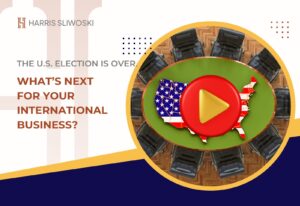
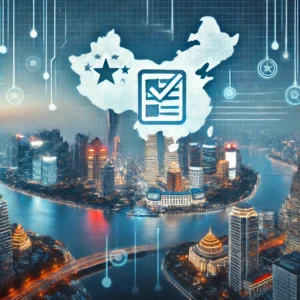

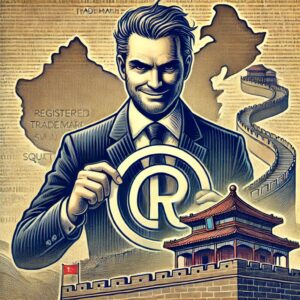

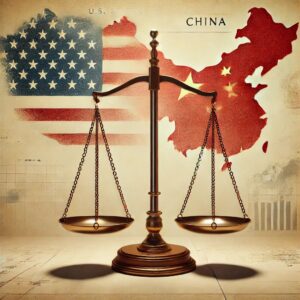
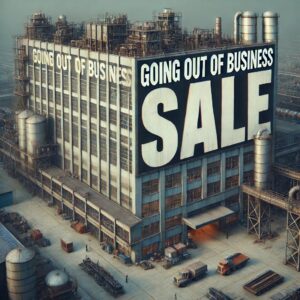

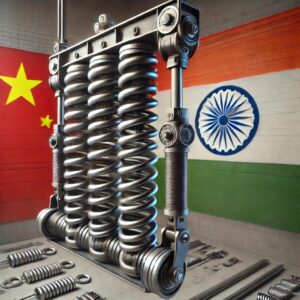





The COVID situation in China is now way, way worse than it’s ever been since March 2020. > 3,000 cases yesterday. Maybe many more coming.
A few questions in my mind:
– Why were those top officials sacked in Guangdong and in Shanghai? Did they lie about the numbers of cases? Is it much worse than reported?
– What number of cases is effectively the point of no return?
– What does Beijing’s contingency plan look like?
– How long would it take them to announce publicly that it’s better to let infections spread relatively freely?
Or am I dramatizing the situation out of proportion?
We already knew the whole team in Shenzhen would work from home this coming week. Now they are officially locked down.
We hope production in Dongguan won’t have to stop. Hard on our customers, and not great for our finances either.